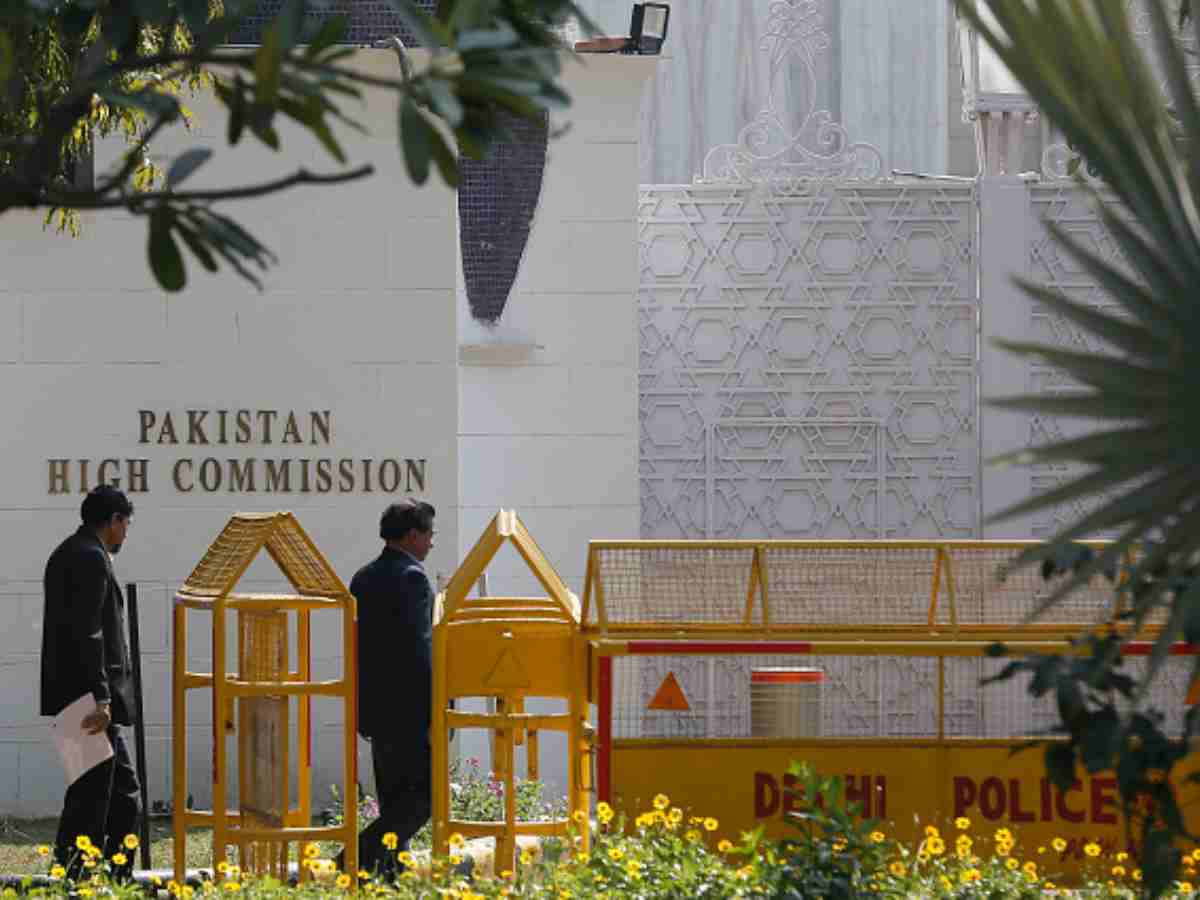Delhi: Chanakyapuri, the national capital’s diplomatic area, is generally abuzz with activity, with the exception of the Pakistan High Commission.
Unlike other embassies and high commissions, the Pakistan High Commission’s gates usually remain closed. There’s a small window near the main gate with two individuals seated there. They respond to enquiries from visitors, most of whom appear old and weary, and generally drop in to get visa for travel across the border.
More often than not, these visitors have members of families living across the Radcliffe line due to Partition of the country in 1947. Despite the strained relations between the two neighbouring countries and difficulty in obtaining a Pakistani visa, people continue to stand in line daily hoping to acquire one.
Recently, Rampur’s Idrees Ahmad, 75, visited the High Commission to enquire about the documents required to file an application for the visa. Part of Ahmad’s family is based in Karachi.
“I want to visit Pakistan to meet my relatives one last time. I am very old and time is running out for me,” says Ahmad.
The Pakistan High Commission building faces the main road of Chanakyapuri, while the back part opens towards Nehru Park.
Entering the building, you wouldn’t believe it’s a High Commission. The garden is overgrown with tall grass, seemingly neglected. I saw two or three buffaloes grazing in the lawn five or six years ago when I had the opportunity to visit the premises. The hygiene inside the High Commission was questionable.
Also read: Chai Chemistry: A journey through India’s rich tea heritage
Missing Iqbal’s photo
Leaving the garden behind, you enter the main building of the High Commission. Immediately, you notice portraits of Mohammad Ali Jinnah, the tallest leader of Pakistan. Pakistan’s other prominent icon, Muhammad Iqbal, was conspicuously absent from any room in the building.
Most staff members could be seen wearing salwar-kameez. However, the senior diplomats were dressed in suits. You would hear Urdu and Punjabi there. At the back of the building, there were approximately two or three dozen flats, also in dire need of a fresh coat of paint.
These flats house the High Commission’s drivers, security guards, chefs, among others. A small mosque is also there. It is unlikely their condition has improved over the years with no improvement in relations, leading to minimal staff.
Residence of Pak diplomats
The top diplomats working in Pakistan mission are usually found residing in South Delhi colonies like Vasant Vihar, Sarvapriya Vihar, and Anand Niketan. Anil Makhijani, Managing Director of a prominent real estate consultancy in South Delhi, has been assisting diplomats in finding rental homes in Delhi for years. He reveals that finding rental homes for Pakistani diplomats is a challenge as landlords are hesitant to rent out their properties to them. They fear that police scrutiny will follow if they rent to Pakistani diplomats.
Echoing the fears of Makhijani, Nipun Jain says that they avoid giving their Shanti Niketan house on rent to Pakistani diplomats.
“We prefer giving our space to diplomats from America, Europe or South Korea,” Nipun admits.
Six decades old
The Pakistan High Commission building was constructed in 1963. After 1958, the Indian government began allocating plots in Chanakyapuri to various countries to establish their embassies and high commissions.
Among the earliest countries to build their structures were the United States, the United Kingdom, China, Sudan, and Pakistan. The Pakistan High Commission is easily recognisable from afar with its blue domes and minarets.
The design clearly exhibits Islamic architecture. Some might wonder why the domes and minarets aren’t green, a colour often associated with Islam in India.
Also read: Delhi: A culinary odyssey through Asia
Pak envoy’s residence
The Pakistan High Commissioner resides in a bungalow on Tilak Marg called ‘Pakistan House’. As you drive from ITO towards India Gate, the Pakistan House is visible on the right side of the road, near Sagar Apartments.
This was actually the personal bungalow of Liaquat Ali Khan, Pakistan’s first Prime Minister, who lived here from 1942 till his departure to the new country. Liaquat Ali Khan presented India’s budget in the Parliament on February 2, 1946, as Finance Minister in the interim government formed under the leadership of Jawaharlal Nehru.
Before Partition, he contested elections for the UP Assembly from Meerut and Muzaffarnagar. He was assassinated in 1951 while addressing a gathering in Rawalpindi. His wife, Gul-e-Rana, was a teacher at Indraprastha College of Delhi University. When the country was divided and Pakistan emerged, the Pakistan High Commission initially operated from this very bungalow on Tilak Marg.
After the new building was built, the High Commissioners continued to reside in the Tilak Marg bungalow. Zahid Hussain was the first High Commissioner of Pakistan in India from August 1947 to April 1948, and lived and worked from the Tilak Marg bungalow. Before Partition, he also served as Financial Advisor to the Chief Commissioner of Delhi.
A dinner was hosted on the occasion of National Day of Pakistan at the Pakistan High Commission on May 29 this year. Charge d’affaires of the Pakistan’s High Commission, Saad Ahmad Warraich, received guests at the Chancery Lawns.
In his welcome note to the guests he said, “The holy month of Ramzan adds spiritual touch to this evening. Pakistan and India do not agree on many things, but it is not that we do not agree on anything. Also, occasions such as this bring out the best of south Asian spirit of warmth and hospitality and you will experience plenty of that today.”
Former Union Minister Mani Shankar Aiyer also attended the dinner along with his wife, Suneet.





